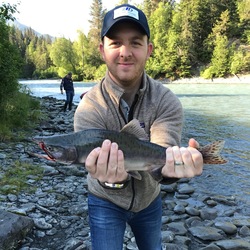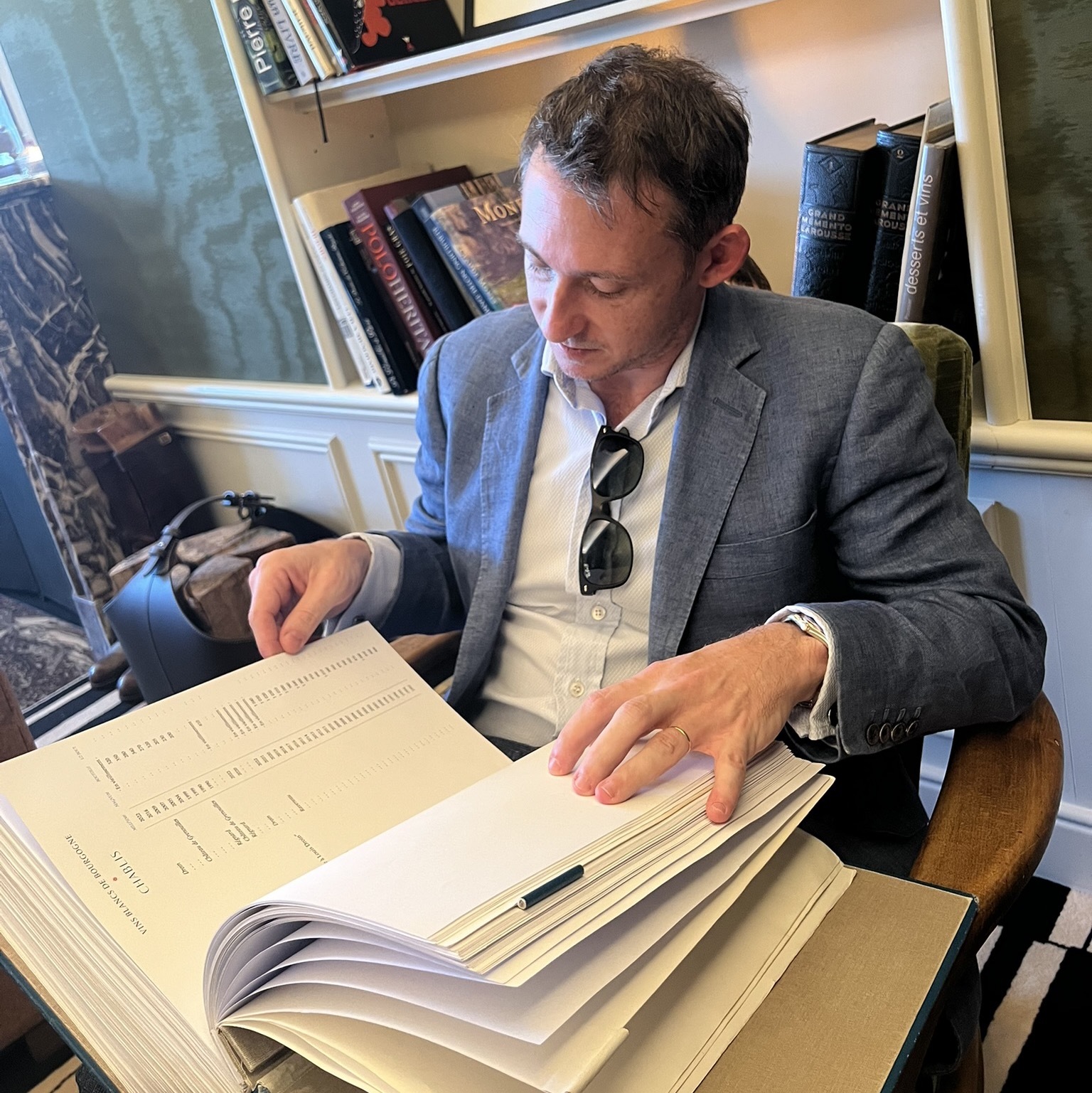Next Generation Wine Co.
Diamond Creek Vineyards
Red Rock Terrace Napa Valley Cabernet Sauvignon 1988
One of the bottles I provided for a co-hosting with Mark at the City Club wine group.
Always a treat to open a birth year wine. I had this last year and this bottle seemed to have more stuffing. It was less muddled/clay driven and more distinctly black fruit and spice heavy. Next to a ‘79 Montelena, it wasn’t as full-bodied, but it certainly had more tannin. The tannic finish was quite pronounced and bolstered throughout the lunch. Mid-palate was herbal and black currant with faint tart red fruit and tobacco. Fun to drink. — 3 years ago
Montes
Montes Alpha M Santa Cruz Apalta Single Estate Cabernet Sauvignon Blend 2003
We recently pulled some cases out of storage, which haven't seen the light of day for nearly 15 years, so I'll have some fun posts in the next several months.
Nose has dried vanilla bean, dehydrated cherry, oak sawdust, mashed blackberry, used coffee grounds, dried strawberry and dried blueberry.
Palate has tanned leather, very dried cherry, over-ripe plum, plum skin, hardwood charcoal, dried raspberry with a mildly tannic grip remaining.
This bottle is in its sweet spot, likely will hold here (in proper storage) for another 5-8 years before decline. Don't ever count out Chilean wines for longevity!
Paired with a beautiful merlot steak from a local farmer in Columbia Co. NY (Kinderhook Farm), boiled then smashed red potatoes finished with a compound herb butter and fresh, local asparagus. I'm finally grilling, and it's barely May!
(Also a stellar pairing with dark chocolate peanut butter cups!) — 6 years ago

Ridge Vineyards
Estate Monte Bello Vineyard Cabernet Sauvignon Blend
Wow! Really hit the spot with the next generation. We went out with a bunch of 30 something things and they fell over for this wine. So did I and can’t believe how good it was. Really would like to get some more. — a year ago
Clos du Val Wine Co.
Estate Napa Valley Cabernet Sauvignon 2018
Clos du Val Wine Company Napa Valley Cabernet Sauvignon 2018, California
Time for my #FridayCabernetfix. Here is a delicious Cabernet from Napa Valley.
Dark ruby in color with a short reddish rim.
Strong nose of black currants, cherries, raisins, dried figs, cedar, licorice, vanilla, spices, tobacco, black pepper and dark chocolates.
Full bodied and smooth with medium acidity and long legs.
Dry and very fruity on the palate with blackberries, sweet cherries, tobacco, cedar, vanilla, leather, spices, earth, chocolates and black pepper.
Medium plus on the finish with round tannins and cherries.
This is a delicious and a classic Napa Cabernet. Exactly what you expect from one. Rich, yet not over the top and very chocolatey.
Still very young, but already very tasty. A beautiful Bordeaux blend with lots of potential. Very engaging and approachable at this young age.
Good right out of the bottle, but needs time to open up and show the tannins (90 minutes).
Showing great potential to become a 95+ point wine, and will age nicely in the next 10 years. Already showing nice complexity with a soft and smooth mouthfeel.
Good by itself as a sipping wine, and good with food too. Will pair nicely with a big piece of steak. I paired it with a charcuterie board of meats and cheeses.
A blend of 80% Cabernet Sauvignon, 12% Merlot, 7% Petit Verdot and 1% Malbec. Aged for 19 months in mostly French oak barrels (58% new).
14.5% alcohol by volume.
92 points.
$52. — 4 years ago
Clos du Val Wine Co.
Napa Valley Cabernet Sauvignon 1975
Clear and brilliant , medium ruby garnet with a light garnet ruby rim . This is showing quite a lot of tobacco and , sous bois , some dusty cassis , sweet red cherry , red plum , coffee and beef jus . After a while a touch of old wood and grafite . Quite intense and certainly alive . On the palate this is elegant and with more dusty, coffee tinged sweet red fruit , red plum , cherry. Dusty cassis. Good density and really elegant acidity and fine , resolved tannins . Good length with some coffee and cocoa on the finish . Mature obviously but showed well and opened up over an hour or so in decanter . Drink now and over the next 5-10 years perhaps , though won’t improve . — 10 months ago
Terreno
Riserva Chianti Classico Sangiovese Blend 1997
Nice little find at Wine & Co in Charleston. Lives up to the high standard of a very nice Tuscan vintage. Nice straight out of gate but I shall add more when I give the next bottle time to breathe. — 5 years ago
Subject To Change Wine Co
Moon Juice Poor Ranch Zinfandel Syrah 2018
Open it. Pour out a glass. Pour that glass back into the bottle. Cork it. Stick it in the fridge. 24 hours later, drink it cold with grilled meat while watching NBA playoffs. Fart on your wife’s leg while she’s napping next to you on the couch. Repeat next weekend — 7 years ago











Freddy R. Troya
Clos du Val – Cabernet Sauvignon “Hirondelle Vineyard” 2021
Stags Leap District AVA, Napa Valley, California, USA🇺🇸
Overview
A beautifully structured blend of 86% Cabernet Sauvignon, 7% Cabernet Franc, and 5% Malbec, sourced primarily from the estate’s historic Hirondelle Vineyard in Stags Leap District. Known for its elegance and precision, the 2021 vintage reflects the unique terroir of this famed sub-AVA, balancing power with finesse.
Aromas & Flavors
Deep and inviting bouquet of ripe blackberry, cassis, and plum, lifted by violet and lavender florals. Subtle touches of vanilla, spice, and pine add layers of complexity. On the palate, dark fruit richness is framed by notes of cranberry, espresso, and toasted oak.
Mouthfeel
Silky and full-bodied with velvety tannins, a generous mid-palate, and a long, smooth finish. The freshness of the 2021 vintage shines through, balancing its concentration and depth.
Winemaking Notes
The wine undergoes careful sorting and vinification to showcase the purity of Stags Leap fruit. Barrel aged in French oak, lending elegance and integrated spice while preserving freshness and varietal character.
Food Pairing
Outstanding alongside grilled ribeye, lamb chops, short ribs, or venison. Also pairs elegantly with truffle risotto, wild mushrooms, or aged cheeses like Comté and Pecorino Toscano.
Verdict
A powerful yet graceful Napa Valley Cabernet, showing off the pedigree of Hirondelle Vineyard. Already drinking beautifully, yet has the structure to evolve gracefully over the next decade. — 5 months ago